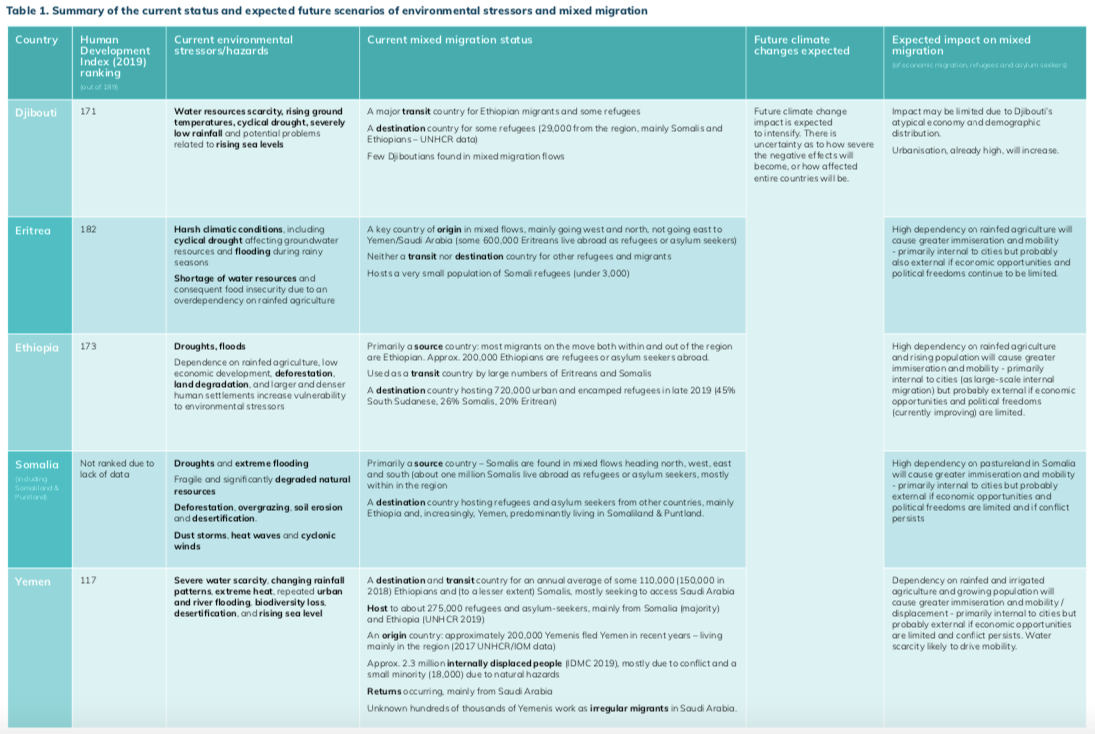Claims about mass migration induced by climate change are widespread. Estimates of the volume of individuals who will migrate within or across borders vary widely, ranging from 25 million to one billion people according to the IOM. Despite these statements, a recent report of the Mixed Migration Center (MMC) on climate change and mixed migration in the Horn of Africa & Yemen indicates how linkages are hard to locate and how evidence is slim.
“Climate change and environmental stressors cannot easily be disaggregated from the wide range of factors affecting populations, and even where some disaggregation is evident the results are not seen in the volume, direction, or destination choices of those affected.”
The authors indicate how mobility patterns in this region are heterogeneous, nonlinear, and multi-directional. Therefore, they included an overview with current environmental stressors, the mixed migration status, future climate change expectation and the expected impact per country:

They did identify internal mobility – including forced displacement and steady urbanisation - as the primary consequence of climate change, but cross-border movement patterns offer no clear correlation to the climate.
Although direct linkages lack, the authors do acknowledge the possibility of changes in mobility patterns caused by climate change. They indicate such changes further amplify economic and political vulnerabilities. Roberto Forin, the program coordinator of the MMC, highlighted during an online working group by the Geneva Peacebuilding Platform the vulnerability of the individuals who are involuntary immobile. These people do not have the assets to move away from regions vulnerable to climate change, but neither can protect themselves towards the effects of a changing climate. Policymakers should realise this and potentially devote additional attention to this group.
Read the full report here.
Photo credit: UNICEF Ethiopia/ Flickr



